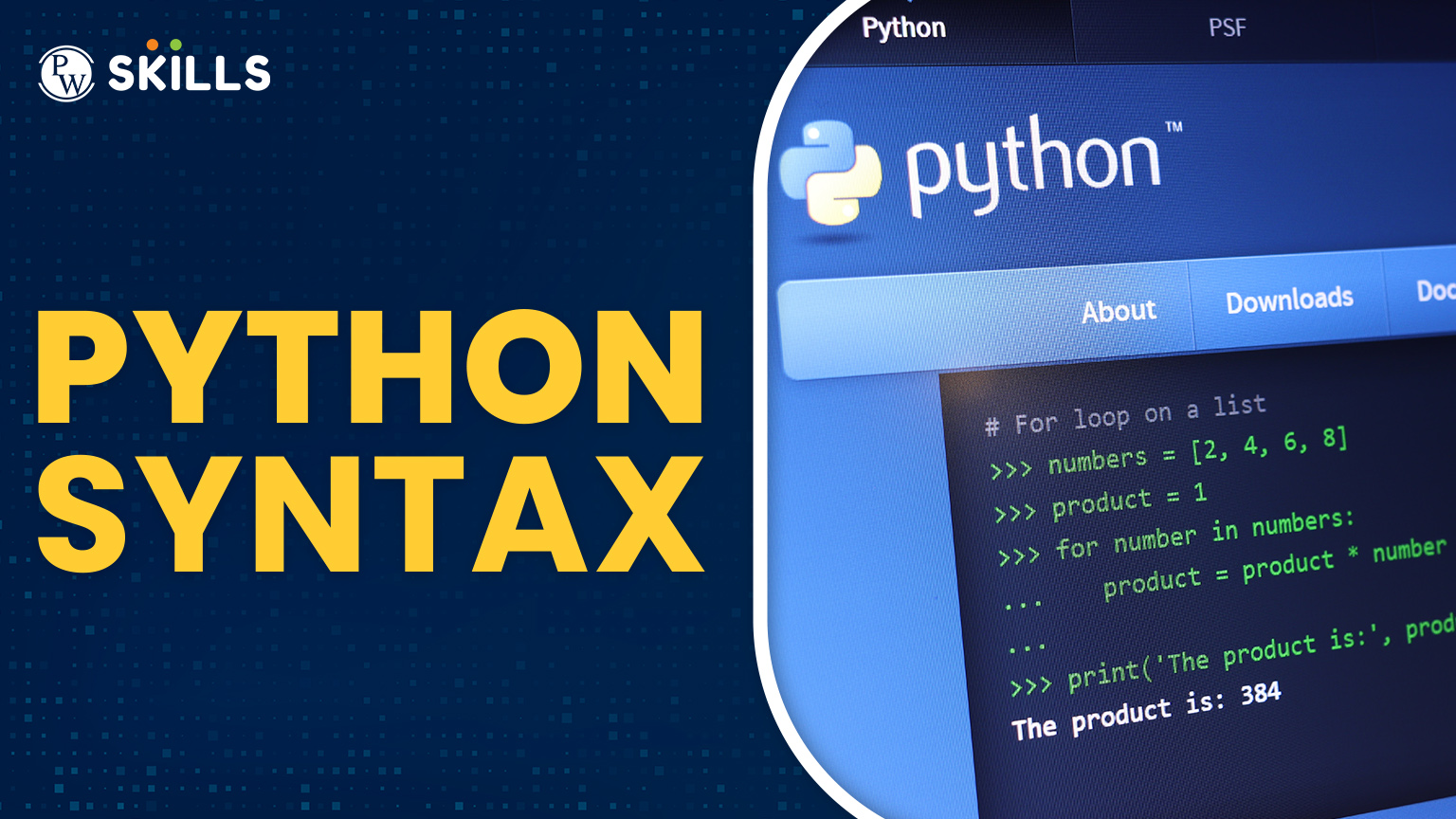If you’re stepping into the world of coding, Python will be your best friend. But there is something you must know and understand intimately before building projects and solving advanced problems: Python Syntax. This blog is a beginner’s guide that introduces Python syntax from the very beginning in a friendly, conversational style, rather than a textbook format. Regardless of whether you are a student or a working professional, Python syntax is the key to unlocking many important doors toward becoming a skilled programmer.
What Is Python Syntax and Why It Matters
Syntax is a program to properly govern how a program could be coded or interpreted in Python. Just as grammar rules in English, syntax refers to how one should structure his code so that it knows what it has to do. It means any invalid Python syntax will not run a program.
There are stricter rules with Java syntax with the use of braces or semicolons, thus requiring more lines. Python, on the other hand, is clean and simple. This is probably one of the reasons why many beginners like Python: its syntax is so simple that it fairly resembles English. This makes it intuitive for first-timers.
Python Syntax: Writing Your First Program
The beauty of Python syntax is how little you need to write to get something done. Want to say something on the screen? Write this:
print(“Hello, world!”)
Nothing more! No curly brackets or semicolons. One line is what it takes, all courtesy of Python syntax. This is its great significance in drawing the willingness of young and aspirant Programmers.
So Python syntax would simply mean:
public class Main {
public static void main(String[] args) {
System.out.println(“Hello, world!”);
}
}
See the difference? With Python syntax, you simply write less but do more.
Python Syntax for Variables and Data Types
Next, let’s check out how variable creation is being treated in Python syntax. In Python, you don’t need to declare the data type. Just assign values and you are ready to go:
name = “Vanita”
age = 25
is_student = True
The programming syntax here is very simple. No need to write String, int, or boolean like you do with Java syntax. Python works it out for you.
Indentation in Python Syntax: No Brackets, Just Spaces
Another distinct feature of Python syntax is indentation. In Python, the code blocks are determined on how much the lines are indented. No curly brackets are required. Here is the illustration:
def greet(name):
print(f”Hello, {name}!”)
If you indent incorrectly, you will surely get an error from the Python interpreter. This should tell you how relevant an understanding of the rules of Python syntax and indentation is going to be.
In contrast, Java programming syntax applies braces to illustrate blocks:
if (x > 0) {
System.out.println(“Positive number”);
}
For Python syntax:
if x > 0:
print(“Positive number”)
Pretty straightforward, right?
Python Syntax for Loops and Conditionals
Loops and conditionals are fundamental components of any language. Let’s now see how Python syntax makes it easy to use.
If-Else Statements:
age = 18
if age >= 18:
print(“You’re an adult”)
else:
print(“You’re a minor”)
For Loops:
for i in range(5):
print(i)
While Loops:
x = 0
while x < 5:
print(x)
x += 1
As you can see, the Python syntax of loops and conditionals is clear-cut and simple to follow. It helps in writing readable codes, which is very important when it comes to working together with a team or reviewing an older code.
Python Syntax for Functions: Simply the Best
Functions are blocks of reusable code. Defining functions is easy with Python syntax.
def say_hello():
print(“Hello!”)
To call it, just write:
say_hello()
Want to add parameters?
def greet(name):
print(f”Hi, {name}!”)
This programming syntax is neat and to the point. The Java syntax would be a lot more verbose in the same situation.
Common Errors in Python Syntax to Keep an Eye On
As a beginner, it is almost certain that you will run into syntax errors. Here are a few that you should watch out for:
- IndentationError: Forgetting to indent your code properly
- SyntaxError: Typos in your Python syntax, such as forgetting to put colons or brackets.
- NameError: Using a variable before defining it.
Knowing common errors will produce much faster debugging. Trust the process and keep practicing writing Python syntax properly every day.
Practice with Python Syntax is the Key to Becoming an Expert
Learning Python syntax, in fact, does not come down to memorizing a bunch of rules and stuff like that. Rather, it is all about using it practically, which includes writing code everyday and thinking why one has to write code in a certain way. As such, the more practice one has, the more it becomes embedded into one.
Also Read:
- Python Boolean: The Complete Guide for Beginners and Professionals (2025 Insights)
- Python Variable Tutorial: Scope, Declaration, and Clean Coding Rules (2025 Insights)
- Inheritance in Python: The Powerful 7 Steps Guide
- Python OOPs Concepts Explained: Master Object-Oriented Programming in Python
Accelerate your awesomeness with the mighty DSA Python course by PW Skills
Ready to crack coding interviews or build your tech career from scratch? PW Skills’ DSA with Python Course offers hands-on problem-solving, real-world examples, and expert mentorship tailored for beginners and professionals alike. Master Data Structures and Algorithms in Python the smart, career-ready way.
Yes, Python syntax is case-sensitive. Variables such as Name and name would be treated as completely different. Definitely. Python syntax is very well known in the web world, mainly using frameworks like Django and Flask. Most of the beginners learn a few basics from Python syntax within a few weeks of practice because it is easily understood by beginners.Python Syntax FAQs
Is it true that Python syntax is case-sensitive?
Can I use Python syntax in web development?
How long does it take to learn python syntax as a beginner?

